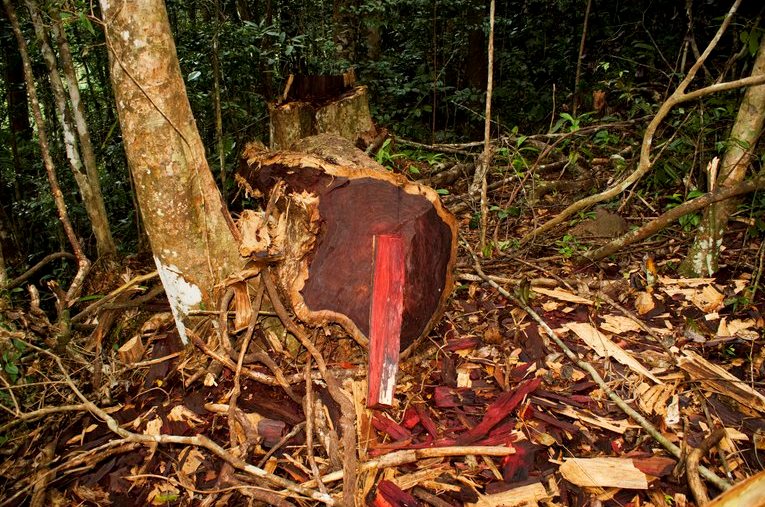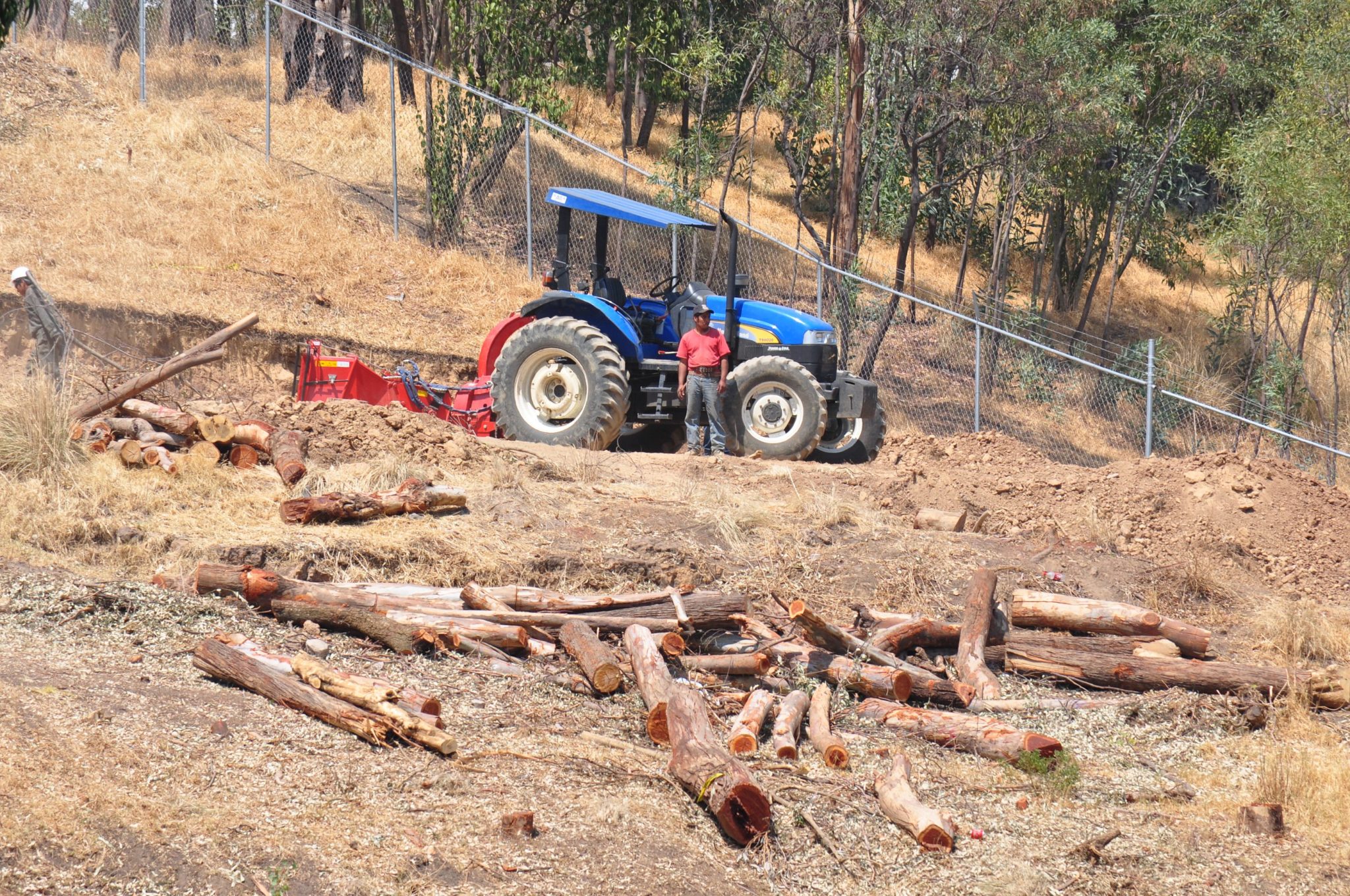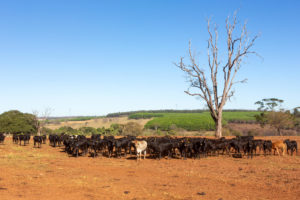Mexico and China must team-up to crack down on the illegal trade in prized Mexican rosewood – a dark, resistant wood that is manufactured into traditional Asian furniture and musical instruments – if it is to safeguard the endangered species.
“Customs should check the wood appropriately and China should close its market,” said Alberto Villaseñor, director of the Southeast Community Integral Development Initiative, a forestry institution in the state of Campeche.
Villaseñor said there are huge economic incentives to fell rosewood, also known as granadillo, and that Chinese buyers are among those cutting the wood illegally.
There is a lot of pressure on the species
At least 62 species of the 250 Dalbergia tree genus to which granadillo belongs are included in International Union for the Conservation of Nature’s Red List, scientists’ catalogue of biodiversity at the highest risk of disappearing.
Of these, three are critically endangered, 26 endangered, and 33 vulnerable.
Classification and protection
Twenty Dalbergia species grow in Mexico, five of which are endemic. Of these, two are listed by Mexico’s standard for the conservation of specimens at risk as “endangered”.
But eight more could qualify and a further four be deemed “threatened”, according to the Mexican Commission for the Knowledge and Use of Biodiversity (Conabio).
2010
the last time the Mexican government updated its list of endangered species
However, the government has not updated its list of endangered species since 2010, meaning these Dalbergia varieties can still be exploited. Along with cedar and pine, granadillo is among the most trafficked woods in Mexico, according to Mexico’s environmental protection agency (Profepa).
“There is a lot of pressure on the species,” Villaseñor said.
Although Conabio has researched granadillo’s fundamental characteristics, it has not advanced in identifying population numbers due to a lack of budget.
This is a fundamental step towards preservation since granadillo is often smuggled out of the country as other woods, according to Angélica Cervantes, a specialist in priority species at Conabio.
“Despite their use as timber and it being cut in an unsustainable way, they [grandillo trees] are not included in the (Mexican) standard. That is why we concluded that they are at risk and proposed that they be [included] in (international) regulation,” Cervantes said, adding that much of the illegal trade is laundered in neighbouring Guatemala.
Mexico lost 262,000 hectares of forest in 2018. The Yucatan Peninsula, which encompasses the states of Campeche, Quintana Roo and Yucatán, is one of the worst affected by illegal cutting, according to Global Forest Watch, a digital platform that monitors forests worldwide.
Did you know...?
Mexico's Yucatán Peninsula is home to the second most biodiverse jungle massif in Latin America
This region is home to the second most biodiverse jungle massif in Latin America after the Amazon and is the habitat of thousands of animal and plant species. However, there are still no precise figures on granadillo loss there.
According to Conabio, overexploitation, trafficking, deforestation and fragmentation of habitat are the main threats to granadillo.
There have been some advances in protecting the species, however. In 2016, the triennial summit of the Convention on International Trade in Endangered Fauna and Flora (CITES) acknowledged 13 species not yet threatened by extinction but whose commercialisation must be controlled in order to prevent it.
As a result, these 13 varieties now require an export permit or a re-export certificate issued by the country of origin.
A losing battle?
Despite these new international protections, crimes involving granadillo continue. In 2018, three Profepa operations seized a total of 166 cubic metres (m3) of the wood.
Two of these were near famous Mayan ruins Calakmul, in Campeche state, some 1,200 kilometres south-east of Mexico City. The area is also a biosphere reserve.
“Dozens of Dalbergia shipments bound for China are seized annually, in several ports in the Pacific and the Yucatan Peninsula,” wrote an anonymously authored 2018 article published in news outlet Animal Político.
A mixture of corruption and lack of customs controls means wood that is often passed off as other varieties can receive a legal seal and be shipped out of the country.

In April, Mexican President Andrés Manuel López Obrador announced he was sending soldiers to protect the ecosystem near Calakmal.
“I take this opportunity to tell those who are destroying the rainforest that a group is going to arrive, we are going to send an army operative so that they don’t keep ransacking it,” he warned.
Since 2011, Profepa has detected attempts to illegally export granadillo from different Mexican ports to Asian markets.
Between 2004 and 2015, Mexican authorities carried out eight raids on ports, airports and border areas, seizing Dalbergia totaling 1,712m3.
From 2013 to 2015, shipments of the Dalbergia retusa or cocobolo varieties from Mexico, which Conabio suspected as being granadillo, totalled 232m3. Most were destined for China, Cambodia, Taiwan and the US.
The key to protection
According to Mexican law, the environment ministry must update the list of threatened species every three years and, accordingly, modify regulation every five.
Cervantes is confident that the new Dalbergia varieties will be added in 2020, the next interval.
“We are still far from assessing whether the protection works. We need to find out a lot,” she said. “This first approximation of how trees grow is fundamental to understanding their behaviour. There are no estimates of planted area and that limits conservation actions.”
To improve identification capability, Mexico included granadillo in the global draft of the Wildlife Bar Code, a forensic tool for identifying species at customs and after seizures that strengthens conservation efforts with genetic samples.

Tackling wildlife trafficking is listed in goal 15 of the UN’s 17 Sustainable Development Goals that the world is trying to achieve by 2030.
Goal seven also considers “adopting urgent measures to end poaching and trafficking in protected species of flora and wildlife and address the illegal demand and supply of wild products.”
National trading bans on products pertaining to endangered species have had some success. In late 2017, China closed the domestic market for African ivory, hitting sales. However, cross-border and illicit trades continue.
A crackdown on the trade in the swim bladder of the Totoaba, a large fish found in Mexico’s Gulf of California, has yielded mixed results.
Villaseñor said halting the illicit granadillo trade requires action at both ends of the trade.
“If you do not act against those who cut it down, it is difficult. CITES hasn’t worked either. We must establish order from here, where it exits,” he said.








